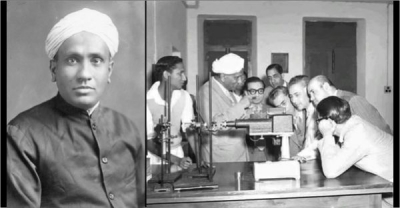
On 28 February 1928, physicist C.V. Raman led an experiment on the scattering of light, when he discovered what now is called the Raman effect. When light interacts with a molecule, the light can give away a small amount of energy to the molecule. As a result of this, the light changes its colour can act as a ‘fingerprint’ for the molecule. This phenomenon is now called Raman scattering and is the result of the Raman effect. The wavelengths and intensity of scattered lights are measured using Raman spectroscopy has a wide variety of applications in biology and medicine. It is used in laboratories all over the world to identify molecules and to analyse living cells and tissues to detect diseases such as cancer. It has been used in several research projects as a means to detect explosives from a safe distance.
Sir C. V. Raman remains the only Indian to receive a Nobel Prize in science. Three Indian-born scientists, Har Gobind Khorana, Subrahmanyan Chandrasekhar and Venkatraman Ramakrishnan, won Nobel Prizes, but they had become U.S. citizens by then.
Picture Credit : Google

